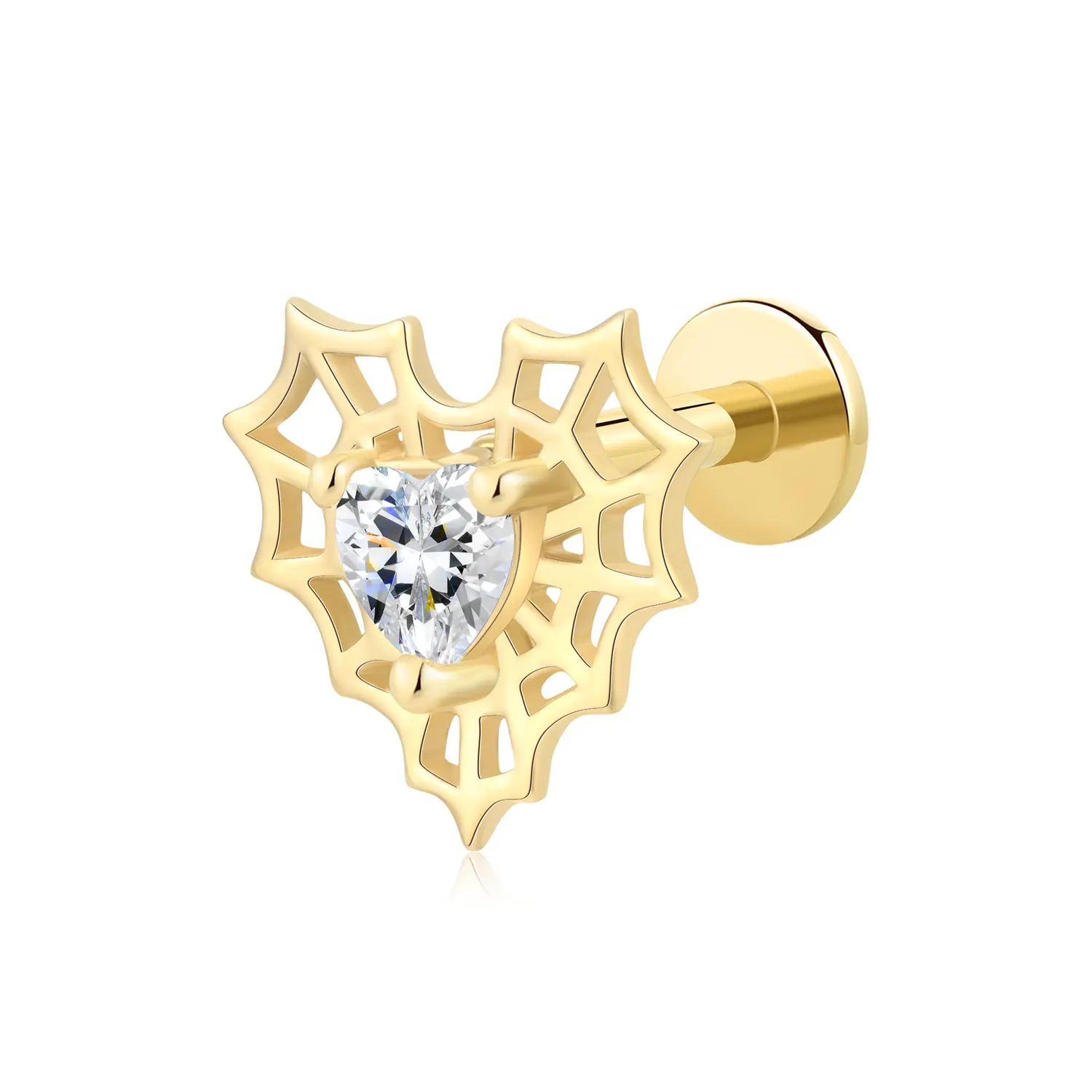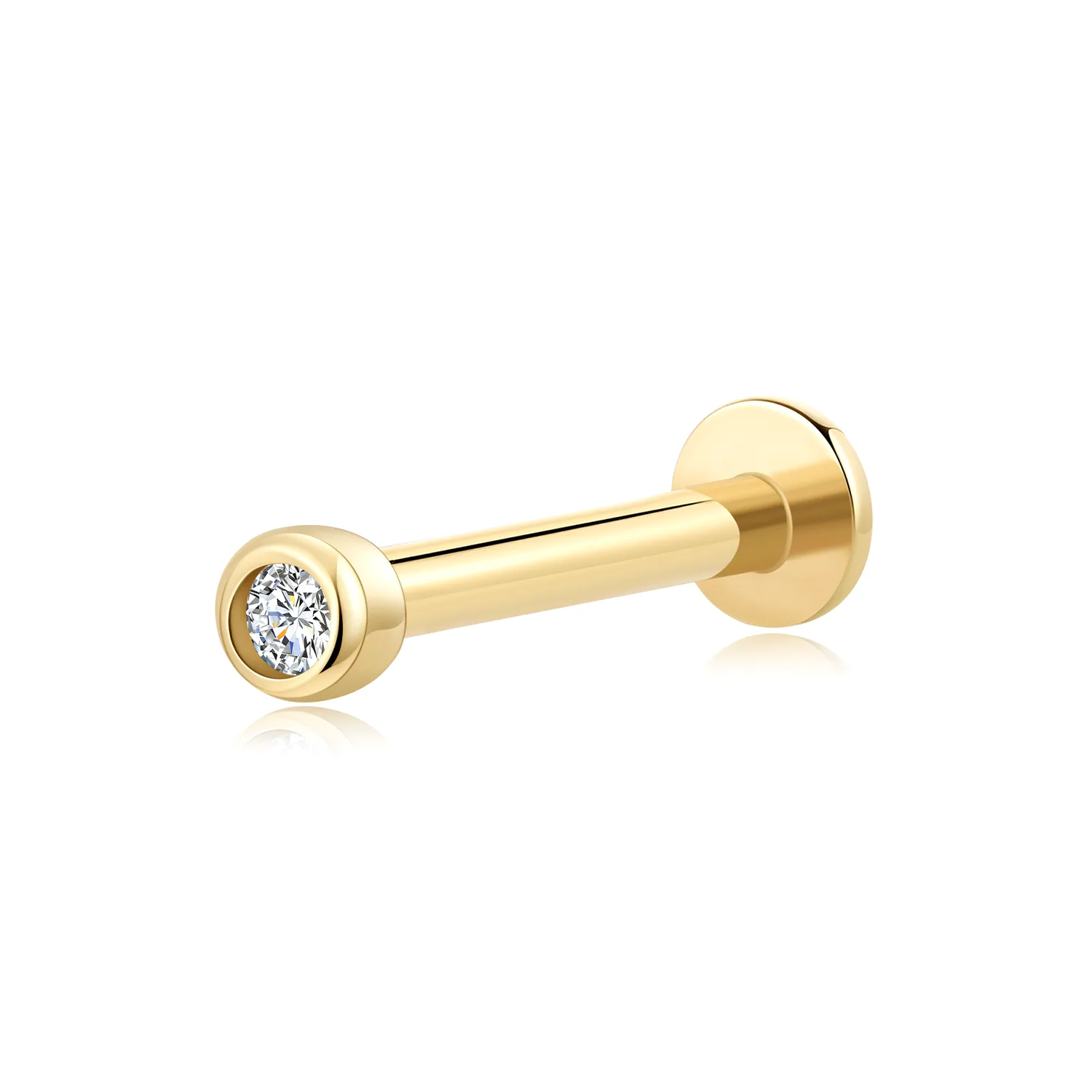Email:wholesale@goldpiercingfactory.com WhatsApp:+14086905740


Getting a fresh ear piercing is such a thrill, but you gotta look after it to keep infections away and help it heal quick. Choosing safe stuff like 14K gold or titanium and sticking to good cleaning habits is crazy important. This guide lays out how earring materials, designs, and care routines protect your piercings. You’ll rock your style with zero stress!
Piercing your ears is a cool way to show who you are, but healing’s no joke if you wanna avoid trouble. Infections usually creep in ‘cause of touchy skin, low-quality jewelry, or kinda messy cleaning habits.
Infections often kick off when bacteria sneak in during or after the piercing. Shoddy earrings or touching gross surfaces can stir up problems too. Cartilage piercings, like the helix or tragus, are trickier to heal. The helix sits on your ear’s upper cartilage edge. It doesn’t get much blood flow, so healing takes forever, and infections pop up easier.
Also, super tight earring backs or rough surfaces can cause little nicks. Those nicks let bacteria slide right in.
Some metals, like nickel, set off reactions in sensitive people. You might notice redness, itching, swelling, or—yikes—blisters around the piercing. If your skin’s fussy, going for hypoallergenic materials isn’t just a good move—it’s gotta happen.
Even with top-notch materials, sloppy aftercare can wreck things. Clean your earrings and piercing spot every day with saline solution or whatever antiseptic your piercer suggests. Don’t mess with your piercings using dirty hands. And skip twisting those earrings early on unless your piercer gives the thumbs-up. Solid hygiene’s the secret to healing without a hitch.
Even with awesome materials, bad aftercare can mess things up. Clean your earrings and piercing spot every day with saline solution or an antiseptic your piercer recommends. Don’t touch your piercings with grimy hands. And don’t twist earrings early on unless your piercer says it’s fine. Solid hygiene is the key to safe healing.
The stuff your earrings are made of matters a lot for healing. Some metals help your piercing heal, while others stir up problems.
Metals like surgical stainless steel, titanium (ASTM F136 certified), niobium, and 14K solid gold are hypoallergenic. They don’t bug your skin much. For instance, 14K gold is 58.5% pure gold mixed with copper and silver. It’s tough, shiny, and safe for sensitive ears.
Check out the 14K Solid Gold Threadless Labret Stud with Embedded CZ (GU60G). It’s got a stainless steel post that’s comfy and lasts long. The cubic zirconia gives it a bit of bling. GPF’s GU60G is a slick threadless labret stud crafted from 14K solid gold, blending style with safety.

Steer clear of cheap costume jewelry or plated metals while healing. These often have nickel or other stuff that irritates skin and slows things down.
Picking the right material is only part of the deal—earring design plays a big role in keeping piercings healthy.
Earrings need a super smooth, shiny surface to avoid scratching tender skin. Rough spots or seams can trap bacteria or hurt new tissue when you move around.
Threadless designs, like those from GPF, are awesome because they slide in and out easily without rubbing. The GU60G mixes solid gold’s beauty with a threadless steel pin for a snug, comfy fit.
Studs beat hoops for fresh piercings. They don’t move much, so they cause less irritation. Hoops can tug on new tissue when you sleep or brush your hair, which slows healing.
Internally threaded studs, like GPF’s, are even better. They go in without sharp threads scratching your skin. GPF’s internally threaded stainless steel pieces are safe and comfy for all piercings.
Flat-back labret studs let air flow around the piercing, unlike tight butterfly backs that squish against your skin. Good airflow keeps moisture away, which stops bacteria from growing.
GPF makes jewelry that’s both stylish and safe, perfect for healing piercings. Their hypoallergenic line uses 14K solid gold with medical-grade stainless steel posts—ideal for sensitive ears.
For example, the GU111G threadless 14K solid gold jewelry has clear cubic zirconia stones that sparkle like crazy. It’s safe and looks great. Another cool pick is the GU201G, a 14K solid gold labret stud with a fun alien face design. GPF blends unique style with top-notch safety.
Once your piercing starts healing—usually after 6–12 weeks—choose jewelry that fits your skin type and health history.
If you’re prone to keloids or eczema, check with a dermatologist before swapping earrings. If you’ve had reactions to metal stuff like watches, stick to hypoallergenic options like titanium or 14K gold.
Look for certifications like ASTM F136 for titanium or ISO 10993 for biocompatibility. These mean the jewelry’s been tested for safety, so you can wear it confidently for a long time.
Even top-quality earrings need regular care to keep your ears happy and the jewelry in good shape.
Clean earrings every day with non-alcoholic antiseptics to stop gunk from building up around posts. Grab some sterile gauze, soak it in saline solution, and wipe the front and back of the earring. Do this daily until your piercing heals. After that, clean weekly if you wear them a lot.
Store earrings in a dry spot, away from humid places like bathrooms. Keep them in separate pouches or lined boxes to avoid scratches, especially for soft metals like gold.
Healing doesn’t stop when the swelling goes down—long-term habits keep infections away.
Wait at least three months before trying new styles, unless your piercer gives the green light. Even then, make sure new earrings are just as high-quality as your healing ones. Don’t skimp just because your piercing feels fine.
Gold can get dull over time, and stainless steel might rust if it’s scratched a lot. Swap out earrings every few years—or sooner if they look faded—to avoid irritating healed piercings.
Q: How long should I wait before changing my earring after piercing?
Wait at least six weeks for lobe piercings. Cartilage piercings, like the helix, might need three months or more, depending on how quick you heal.
Q: What metal is best for sensitive ears?
Go for hypoallergenic metals like titanium (ASTM F136 certified), niobium, surgical-grade stainless steel, or 14K solid gold. They cut down on allergic reactions nicely.
Q: Can I sleep with new earrings?
Sure, but stick to low-profile studs made for healing. Skip hoops or big backings that press on your ear when you’re lying down—they can up the infection risk.